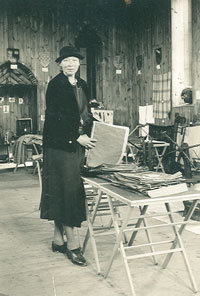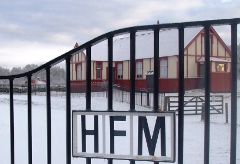1. Highland Folk Museum
The Highland Folk Museum was founded by a remarkable woman, Dr I.F. Grant, in the 1930s. Using her own funds, she toured the Highlands collecting domestic utensils, furniture, farm implements and machinery in order to preserve a way of life that was fast disappearing. She called her museum Am Fasgadh, a Gaelic term meaning The Shelter, since her aim was “to shelter homely ancient things from destruction”.
The museum opened on Iona in 1935 and moved to Badenoch in 1939, first to the old church in Laggan, then to Kingussie in 1944. In the late 1980s a second site was opened in Newtonmore. The buildings in Kingussie became unsuitable for a growing museum and had to close to the public in 2007. A purpose-built museum store was opened in Newtonmore in 2014 to house the internationally important collection. It is called Am Fasgadh, to maintain Dr Grant’s tradition of using that name for each of the museum’s various homes.
The 80-acre site at Newtonmore realised Dr Grant’s vision of an open-air, living history museum which preserves the material culture of the Scottish Highlands and Islands. Here you can see how the Highlanders lived, from a 1700s recreated township to a 1940s croft. The historic buildings include a tin church, a 1930s school, a post office and a shinty pavilion, as well as domestic buildings where you see how the daily life of the people changed over three hundred years.
The Museum is open from April to October. Admission is free and the site includes a café, shop and children’s play area. Further information is available from the Museum’s website.

Sources
Highland Folk Museum
Badenoch Record
Grant, I.F. (2007) The Making of Am Fasgadh: An Account of the Origins of the Highland Folk Museum by its Founder.
